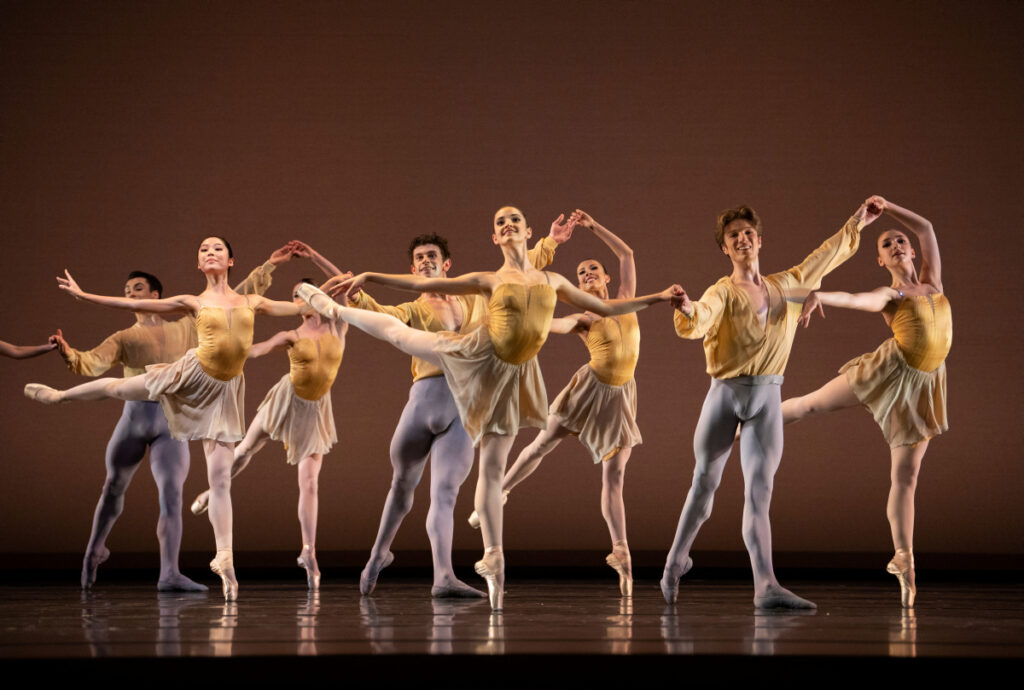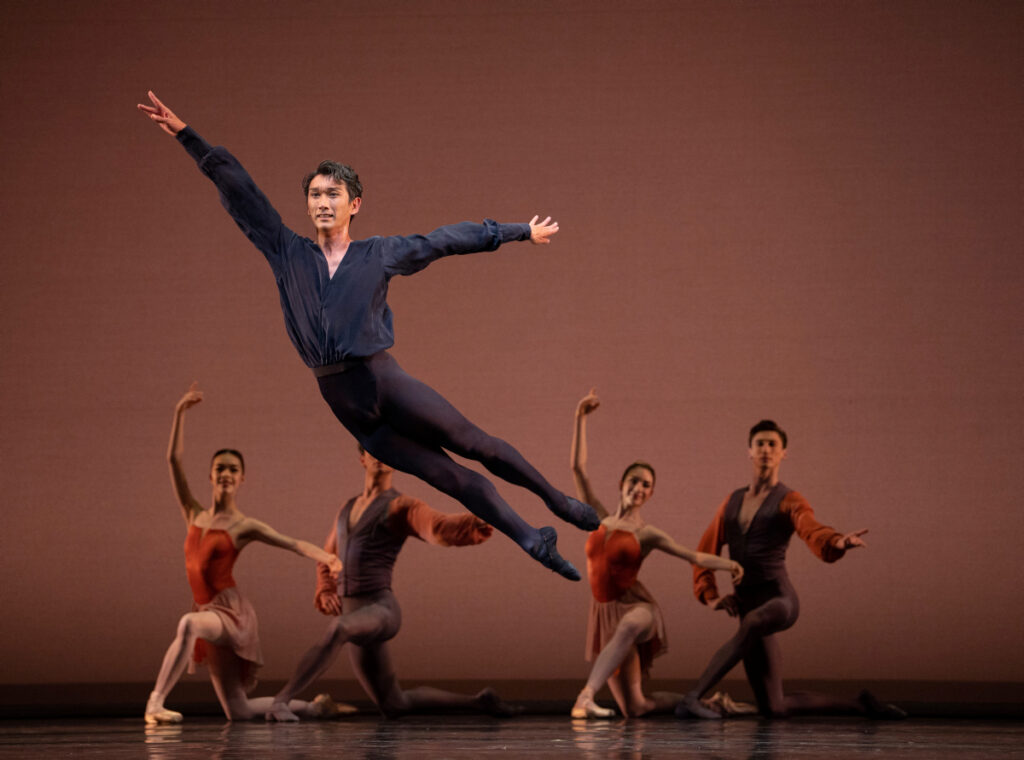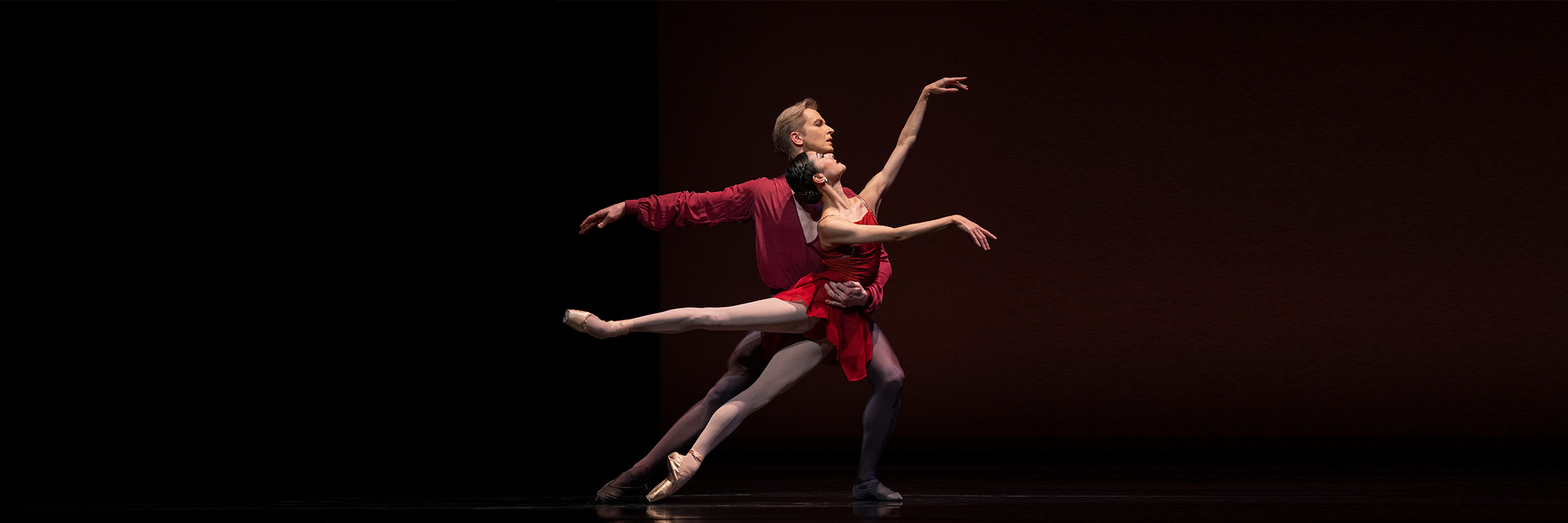About Tomasson’s Prism
Clarity, Classicism, and Precision: Tomasson’s Dance Heritage
Tomasson’s Prism is part of SF Ballet’s 2022 Season. It was performed in Program 6 from April 6–15, 2022.
In 2000, San Francisco Ballet Artistic Director Helgi Tomasson returned to New York City Ballet, his home for 15 of his dancing years, to create a ballet for the Diamond Project, a program designed to yield new works for that company’s repertory. The result was Prism, which had its San Francisco Ballet premiere in 2001. Widely praised by New York critics, it has proved to be as successful on the choreographer’s own company as it was on the New York troupe. Set to Beethoven’s Piano Concerto No. 1, this neoclassical ballet reflects the choreographer’s roots in George Balanchine’s company and reveals his sure grasp of the skill he considers the most telling mark of a good choreographer—the ability to move large groups of dancers effectively in space.

In Prism’s three movements—an allegro series of pas de trois, an adagio pas de deux, and a finale crowned by male speed and bravura—we see the clarity, classicism, and precision of Tomasson’s dance heritage coupled with his love of neoclassicism. The first and third sections brim with a dynamic, flowing variety of formations marked by symmetry, canonical sequences, and strong diagonal lines, while in the serene second movement, a shadowy ensemble flanks a principal couple and fills the stage with subtle echoes.
The dancing is clean and nuanced, perfectly suited to the first two movements’ filigreed orchestrations (particularly in the keyboard parts) and the broadly etched passages of the third movement. The concerto, which Beethoven wrote and revised in the early 1790s, underwent further transformation by the composer in 1798; some listeners discern a distinction between the first two movements, written before Beethoven had been fully exposed to Mozart’s impact, and the last. However, Tomasson gives the ballet a cohesive form that overrides any possible complaints of musical disparity.

Ballet Master Tina LeBlanc, who danced a lead role in Prism in its first season at SF Ballet, describes the first movement as bright but difficult. “There are some moments that are very challenging technically—it’s not until the end of the first movement, when you’re really tired, and then you have a solo,” she says with a laugh, adding that it is a ballet that “you have to gear yourself up for.”
In the second movement, a central couple that dances with languid intimacy, surrounded by the corps de ballet moving in and out of the shadows and echoing and supporting their movements. As the couple moves in isolation in a pool of light, the corps dancers seem to float in the background, entering the audience’s awareness just enough to fill the space and create a sense of comfort and depth.

The third movement features a male soloist dressed in distinctive black, who, with the ensemble, brings the ballet to a whirlwind finish. During the solo, hints of the influence of Jerome Robbins, in whose works Tomasson danced many roles, combine with jazz inflections as the lively melody flits from one musical voice to another. Near the end, the ensemble’s movement stops, and the man turns, lifting his arms like a conductor poised for action. It’s as if he brings the audience as well as the dancers under his command. The barrier of the proscenium disappears as the dancers swirl around him, sweeping him, and us, into their exhilarating folds.
by Cheryl A. Ossola
This production was part of the 2022 Season.
Header Image: Yuan Yuan Tan and Tiit Helimets in Tomasson’s Prism // © Erik Tomasson








